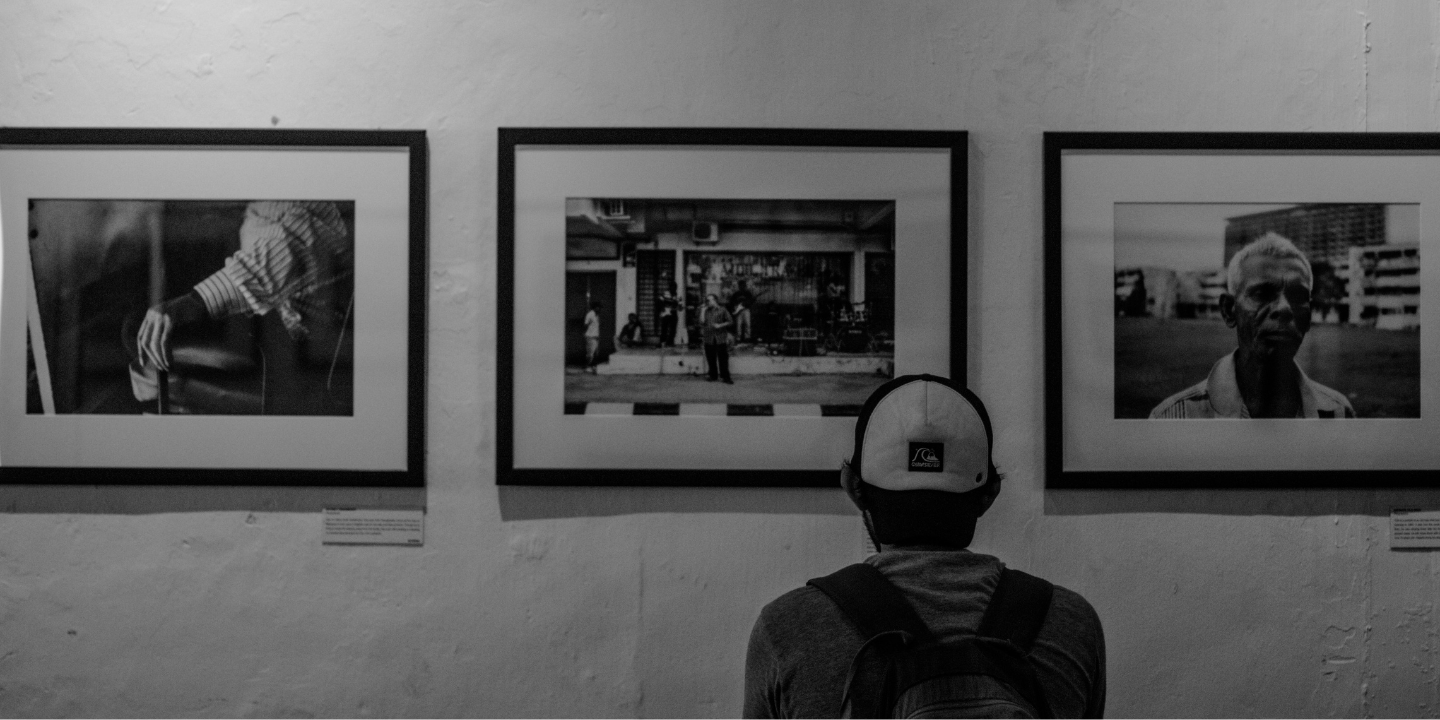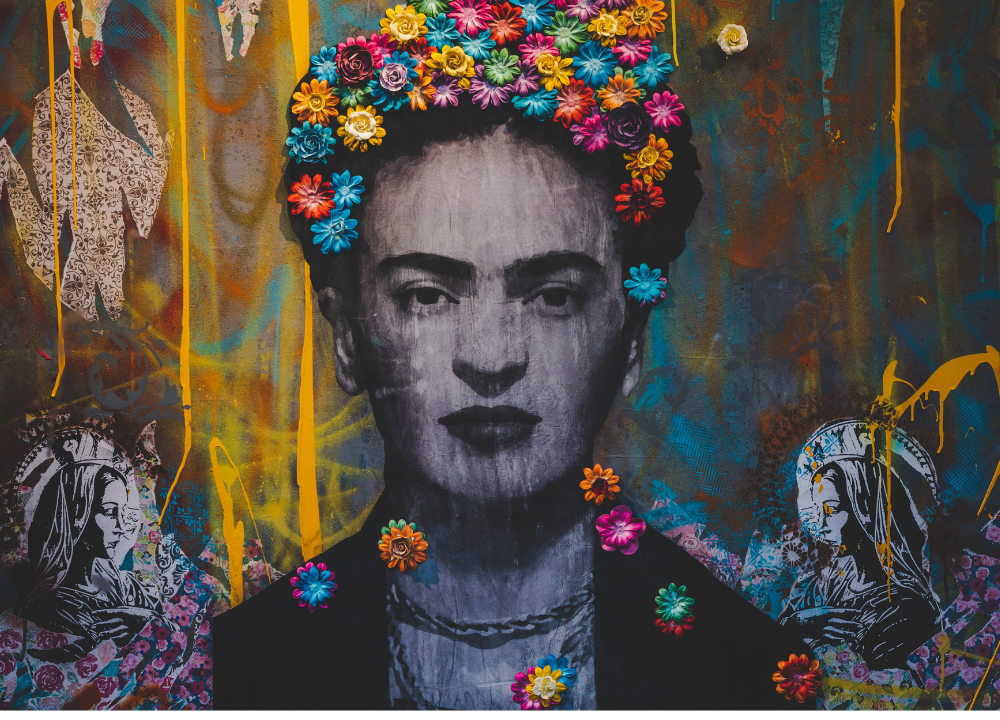When it comes to stepping into the transformative spaces of art galleries, your attire can be a personal canvas showcasing your style and respect for the artful environment. Imagine weaving through a tapestry of creations, with each brushstroke of your outfit thoughtfully curated to complement the array of masterpieces you’ll encounter. Are you ready to dive into the sartorial symphony of an art lover’s wardrobe choices? Through the lens of aesthetic and comfort, we’ll guide you past the stark white walls and glistening floors into a world where fashion meets fine art. Let’s explore together what to adorn yourself with for a seamless immersion into the art world.
Style Meets Culture: Navigating Art Gallery Attire
Stepping out to admire the brushstrokes of history, the contemporary flicks of a modern artist, or the undefined boundaries of abstract art is not just a visual feast—it’s a cultural experience. Your ensemble speaks volumes as you roam the echoing halls of creativity; it tells a tale of your own design while showing reverence for the venue’s vibe and temperament. Whether you’re aiming for a day of refined elegance or an evening of high-concept fashion, the clothes you choose become part of the conversation between you and the masterpieces that surround you.
Understand the Venue: Dress Codes & Expectations
When you’re heading to an art exhibition, the first step is checking out the venue. Dress codes can be as diverse as the art on the walls! Some galleries love a casual vibe, where your favorite jeans and a cool tee totally fit in. Others might be more upscale, demanding a sharper look—think crisp shirts and tailored pants. Remember, invitations and gallery websites often give you the scoop on what’s expected.
It’s not just about fitting in; it’s about respect, too. By aligning your outfit with the venue’s ambiance, you show you’re there for the art and honor the space. Whether it’s an edgy downtown gallery asking for avant-garde attire or a more conservative, high-end spot expecting cocktail dresses and suits, honoring that request reflects your appreciation for the culture and the event. When in doubt, go semi-formal; it’s the safe bet that leans towards sophistication.
Interpreting Artistic License: Personal Style Expressions
When it comes to dressing for an art exhibit, let your fashion choices speak to your creative side. Your ensemble is a chance to tell a story, to express parts of who you are, sort of like how artists do with their work. Maybe you’ll pair a vintage band tee with an elegant skirt or toss on a brightly colored scarf that speaks “modern art” louder than words. Your artistic license is all about owning your personal flair and letting it shine in a place that’s all about creativity.
Art galleries are not just spaces filled with art; they’re also full of diverse people expressing their tastes. That makes for a perfect backdrop to experiment with bolder fashion pieces or unique accessories you might not wear every day. Is there a hand-crafted necklace you’ve been eager to show off or a pair of funky glasses that you love? This is the time to wear them. Just remember, the key is in making choices that reflect your essence while still offering a nod to the sophistication of your surroundings.
Striking a Balance: Comfort Meets Sophistication
Amidst the silent conversation between viewer and artwork, how you dress should echo both class and coziness. Imagine slipping into a soft, yet structured blazer that pairs perfectly over a relaxed-fit blouse — this blend allows for effortless movement as you float from exhibit to exhibit. Comfort doesn’t have to scream casual; instead, think of luxe fabrics that drape elegantly but don’t constrain your exploration.
It’s the fine line between a rigid office attire and the laid-back weekend wear. Your shoes, for instance, might be elegant loafers or cultured flats that whisper grace rather than shout discomfort after hours of admiration. Aim for relaxed refinement, ensuring that every element of your outfit promotes an experience where the beauty is in both the art and the ease of your presence among it.

The Canvas of Choice: Key Clothing Essentials
Stepping into the gallery scene calls for a wardrobe that articulates both your personality and the sophisticated ethos of the space. It’s a delicate dance between standing out and harmonizing with the artwork, which requires a thoughtful selection from your closet. Whether you’re gravitating towards understated elegance or bold statements, your garments play a crucial role in crafting your artistic aura. Let’s unwrap the essential components of gallery-ready attire, helping you navigate from casual expressions to the avant-garde flair with ease.
Top Picks for Outfits: From Casual Chic to Avant-Garde
Understand the Venue: Dress Codes & Expectations
When venturing into the heart of creativity, knowing your audience—or in this case, the venue—is key. Are you stepping into a local pop-up gallery or a high-end exhibition? While smaller galleries might invite a more relaxed vibe, prestigious institutions often come with an unspoken dress code that leans towards polished looks. So, it’s important to get a feel for the place before deciding on your fashion statement.
Interpreting Artistic License: Personal Style Expressions
Art galleries are not just about the visuals on the wall; they’re a space where personal style is appreciated. Dressing for these sanctuaries of art should be seen as a chance to express yourself. Maybe you’ll pull off that bohemian maxi dress paired with sandals for a touch of free-spirited flair, or perhaps go bold with avant-garde pieces that echo the innovation of the art surrounding you. Let your outfit be a glimpse into your own aesthetic preference.
Striking a Balance: Comfort Meets Sophistication
Comfort doesn’t have to take a back seat to elegance. Choose breathable fabrics and non-restrictive fits to ensure you can roam extensively through the exhibits without any discomfort. Remember, sophistication can come in the form of a well-tailored jumpsuit or a sleek turtleneck paired with wide-legged trousers—pieces that allow movement while oozing chicness. Comfort and sophistication can go hand in hand as long as you wear them with confidence.
The Role of Color: What Palette to Pick
Exploring an art gallery is like stepping into a splash of hues and textures, and your outfit is part of that vibrant scene. Choosing the right colors to wear is crucial as it reflects your mood and compliments the artistic surroundings. Are you drawn to the subdued whispers of pastels, or do you resonate more with bold, statement-making shades? Either way, the palette you pick can either make you stand out or blend in harmoniously with the masterpieces around you.
When deciding on colors, consider the atmosphere and lighting within the gallery. Bright and airy spaces welcome light, reflective tones that sparkle quietly alongside the art. On the flip side, more dramatic interiors call for deeper, richer tones that echo the depth and intensity of the works displayed. Remember, a monochromatic ensemble creates an uninterrupted visual line — elegant and understated — that allows the art to take center stage.
Accessorizing Your Outfit: Sculpting the Finishing Touches
Accessorizing is like adding those final brushstrokes to a masterpiece. It’s about sculpting the character of your look with touches that speak a silent but powerful language. So when you’re perusing the corridors filled with artistic wonders, think of your accessories as extensions of the art around you. Something as simple as a bold necklace or a subtle pair of earrings can harmonize with the creativity on display.
Consider textures and materials that could either create a statement or softly blend into your overall aesthetic. For a touch of elegance, a silk scarf can add a splash of color without overwhelming, while a leather watch band whispers timeless class. Don’t forget that even your bag or clutch is part of the narrative — a sleek tote tells a story of polished practicality, while a vibrant hand-painted clutch may mirror the vibrant work on the walls. Just remember, the goal is to complement, not compete with, the surrounding art.
Materials & Textures: Weaving Your Aesthetic Story
As you glide through the halls of an art space, your clothing is more than just attire—it’s a part of the visual feast. The materials and textures you choose are whispers of your personality, echoing through the quiet hum of admiration. Think of your garment choice as a brush in hand, ready to paint your presence amidst the canvases. Whether it’s silk that flows as you move, or tweed that stands firm like a sculpture, your fabric choice sets the tone for your aesthetic narrative. Let’s stitch our way through the fabric of fashion that makes you not just a viewer, but a part of the art itself.
Choosing Fabrics That Speak of Artistry and Flow
Imagine your outfit as a silent conversation with the artworks surrounding you. Opt for fabrics that ripple and move as you do, like a gentle nod to the dynamic brushstrokes on canvas. Tactile sensations play a huge part in the way we experience art, and materials like silk, chiffon, or lightweight cotton have an inherent grace that mirrors the fluidity found in art galleries.
When it’s about mirroring the environment you’re in, choose textures that are both visually interesting and delightful to the touch. Fabrics with a bit of sheen can catch the gallery lighting beautifully, creating a subtle interplay between you and the luminous artworks. Meanwhile, natural fabrics with a bit of texture to them—think linen or raw silk—can add depth and character to your ensemble, reflecting the layering and complexity seen in many masterpieces.
The Intersection of Pattern & Gallery Backdrop
Your fashion choices are more than just clothes; they’re an extension of the ambiance in the gallery space itself. When selecting patterns, think about the dialogue your outfit will have with the environment. Bold, geometric patterns can echo the abstract paintings on the walls, creating a cohesive visual flow. Conversely, minimalist or monochromatic designs may stand out against a backdrop of colorful, detailed artwork, making you a walking piece of art.
However, it’s not just about matching the art. Sometimes, choosing a pattern that contrasts with the gallery’s setting can be just as impactful. A flowery dress amidst contemporary sculptures or a sharp pinstripe alongside classic portraits can push the boundaries of traditional gallery fashion. Ultimately, your choice of pattern should be a reflection of your unique story and how you wish to weave it into the fabric of the gallery’s narrative.
Footwear as a Foundation: Steps to Style
Imagine your shoes as the foundation of a masterpiece, the base upon which everything else stands. They’re not just a fashion choice; they’re the trusty companions that carry you from exhibit to exhibit. As you wander through the galleries, your footwear should offer comfort without sacrificing your personal flair. Whether you prefer a bold statement or a subtle accent, selecting the proper shoes can underpin your entire look, lending both style and staying power to your artful amble. Let’s step into the essential details and practical pointers for picking the perfect gallery-going shoes.
Selecting Shoes: Accent or Understatement?
When picking out footwear for an art-filled day, think of your shoes as either the star of your outfit or as a supporting character. Bold, eye-catching shoes can sometimes be conversation starters and add that extra bit of flair to your look. Imagine stepping through the gallery in a pair of vibrant heels or sleek loafers that draw attention and nod to your artistic vibe.
On the flip side, if you’re aiming for an understated elegance, choose shoes that are stylish but don’t compete with your attire or the art around you. Comfortable yet classy flats or subtle boots can complement your outfit without screaming for attention. It’s all about striking that perfect balance — creating a complete look that feels both put together and allows you to stroll through exhibits all day without a hint of discomfort.
Practical Tips for Comfort During Long Gallery Visits
When you’re drifting from canvas to canvas, comfort is key. Think shoes that let you stroll rather than sprint. Opt for a pair that your feet are already friends with, because those miles of marble floors can feel like a marathon. Cushioned soles or supportive insoles can be secret heroes on a day spent admiring brushwork and sculptures.
Now, don’t underestimate the power of layers! Museums can be unpredictable when it comes to indoor climates. A light cardi or a chic scarf gives you the flexibility to adapt without missing a beat. It’s all about enjoying the art without distraction, so wrap up or pare down as needed and keep the focus on the feast for your eyes.
A Palette for All Seasons: Adapting Attires to the Weather
Exploring art doesn’t happen in a vacuum – as seasons shift, so should our sartorial choices. Whether you’re floating through chilly display halls or soaking in the ambiance at a summer exhibit, your outfit must accommodate the weather’s whims while still flattering those sophisticated cultural spaces. Let’s delve into ways to layer for the cold and strip back for the heat, ensuring every visit to a gallery is comfortable, stylish, and seasonally appropriate.
Creating Layers for Chillier Display Halls
When the air is crisp and the gallery halls feel cooler, layering becomes your best friend. It’s essential to piece together a look that not only captures your style but also keeps you comfortably warm as you peruse the art. Chunky sweaters and stylish blazers work wonders over a simple turtleneck or a long-sleeve button-up. The beauty of layers is that you can peel them off or pile them on depending on how cozy or cool you find each room.
Classic cardigans or lightweight jackets are versatile pieces that don’t just offer warmth; they’re also an additional surface for expressing your aesthetic tastes. Think of textures and how a smooth, silk scarf contrasts nicely with a knit top, or how a leather jacket adds an edge to an otherwise delicate look. Layering isn’t just practical; it’s a dynamic way to explore fashion while keeping in step with the ambiance of an art display.
Light and Airy Options for Summer Soirees
When the weather heats up and the sun plays a permanent fixture in the sky, dressing for an art exhibition becomes a blend of coolness and class. Flowy sundresses and breathable linen shirts stand as go-to garments, allowing you to bask in the creativity of the gallery while staying comfortably chic. Soft, natural materials not only feel good on the skin but also add an effortless finesse to your ensemble.
Choosing attire that’s light in weight and color can make all the difference under the summer glow. Fabrics like cotton, chambray, and silk let your skin breathe and move with ease, ideal for those longer strolls through endless corridors of art. Embrace patterns like stripes or florals that often reflect the season’s joyful vibe, ensuring you become a seamless extension of the artistry around you.
Be Your Own Masterpiece: Daring to Stand Out or Blend In
Embarking on a journey through an art exhibit isn’t just about appreciating the masterpieces on the walls—it’s also about creating one with the fashion you don. Deciding whether to shimmer with boldness or whisper with subtlety in your dress can turn your gallery visit into a self-expression adventure. Do you aim to turn heads with an outfit that speaks volumes, or do you prefer to let the art take the spotlight while you offer a complementary backdrop? Understanding this personal choice will set the stage for your entire gallery experience.
When to Make a Statement with Outfits
Art galleries are more than just places to see art—they’re stages for self-expression. Sometimes, standing out is just what you need to make your gallery visit memorable. When a gallery features bold, avant-garde pieces, wearing an outfit that’s equally daring can be a wonderful way to engage with the theme. If there’s a special opening night or a gala, these are prime occasions to don your most eye-catching ensemble.
On the flip side, when the art speaks in subtle whispers, your wardrobe can follow suit. But even amidst minimalism, a single statement piece—like an unconventional hat or a pair of designer shoes—can create a vibrant conversation between your style and the surrounding artwork. As an art lover, decide if you want to echo the art’s audacity or provide a thoughtful contrast to the exhibit. Remember, your style is an extension of your personal narrative; let it speak volumes in these creative spaces.
The Elegance of Subtlety in Dressing for Galleries
Sometimes, less is more — especially when it comes to dressing for a space filled with creativity and color. Opting for understated elegance allows you to appreciate the art without your outfit shouting for attention. Think of muted tones and simple cuts; these choices can act as a refined backdrop to the visual feast before you.
In the realm of minimalism, textures and fabrics take center stage. A silk blouse or a fine knit, perhaps? They whisper class without stealing the scene. Remember, the goal is to engage with the art, not compete with it. It’s in this subtle harmony that your own sense of style quietly resonates within the gallery’s walls.
Conclusion
Picturing yourself smoothly navigating an art gallery already feels richer when you imagine your ensemble as part of the experience. As you twirl from painting to sculpture, considering your own presentation amongst such storied culture adds layers of enjoyment to your excursion. Tailoring your attire to your environment isn’t just a nod to tradition; it becomes an active dialogue between you and the exhibition of human creativity you walk amongst. In clothing yourself with intention, you open a silent discourse where fabrics yield to form, and designs echo the depth of expression found on gallery walls. Venture forth as a living exhibit – where what to wear is not just practicality, but a brushstroke of personal narrative on the vibrant canvas of art appreciation.




